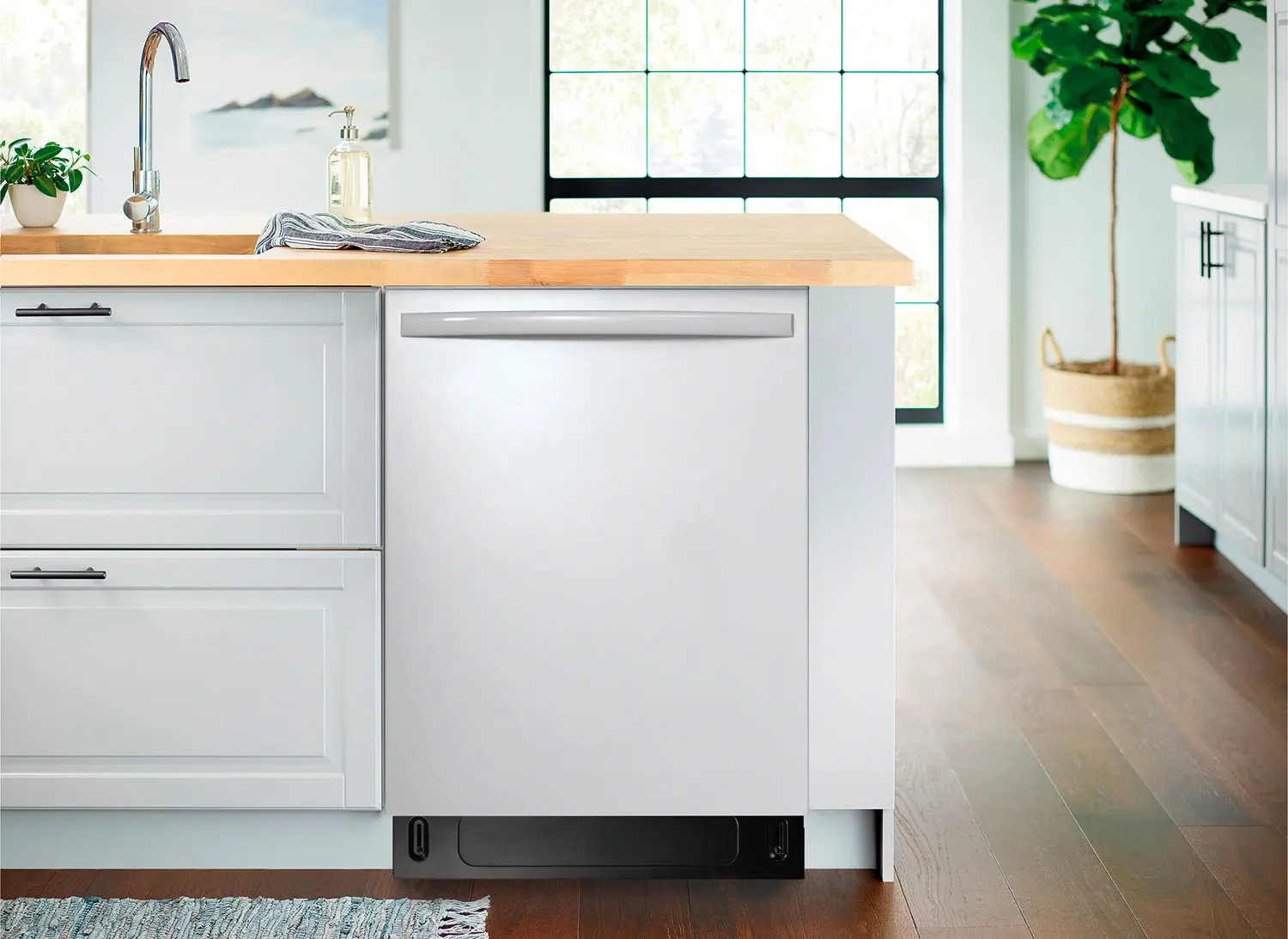
Even though your dishwasher’s main job is cleaning, it also needs a little TLC from time to time. Over the months, leftover food particles and residues can accumulate, leading to unpleasant smells and reduced efficiency. Here’s how to give your dishwasher the cleaning it deserves.

Materials you’ll need:
- White vinegar
- Baking soda
- A soft cloth or sponge
- A toothbrush
Steps to a sparkling clean dishwasher:
- Empty the dishwasher: Before diving in, ensure there are no dishes or utensils inside.
- Inspect and clean the drain: At the bottom of your dishwasher, you’ll find the drain. Look for any food bits or other debris that might be causing blockages and clear them out.
- Run a vinegar wash cycle: Pour one cup of white vinegar into a dishwasher-safe bowl and place it on the top rack. Start a hot-water cycle. This will help remove greasy residues, sanitize the machine, and eliminate any lingering odours.
- Go for a baking soda rinse: Once the vinegar cycle is done, sprinkle a cup of baking soda at the bottom and run a short, hot water cycle. Baking soda is excellent for neutralizing odours and will leave your dishwasher smelling fresh.
Sanitizing your dishwasher:
Vinegar does a decent job sanitizing, and can even help remove hard water marks. For an extra layer of cleanliness, consider using a dishwasher-safe sanitizing agent. Just ensure it’s suitable for dishwashers and follow the product’s guidelines.
Cleaning behind your dishwasher
While the inside of your dishwasher gets a regular cleaning, the area behind it can often be neglected. Dust, debris, and sometimes even pests can find their way there. Cleaning this spot not only ensures a hygienic kitchen but can also enhance the efficiency of your dishwasher. Consider doing this about once per year (Tip: add an entry to your phone calendar to repeat on the same day each year). Here’s how to tackle it:
Cleaning behind built-in dishwashers:
- Safety first: Before starting, turn off the power to your dishwasher at the circuit breaker or unplug it if you can reach the plug. It’s also wise to turn off the water supply.
- Gently pull out: Most built-in dishwashers are secured to the countertop with brackets. If you’re aiming to clean without fully removing the dishwasher, you can slightly loosen these brackets. This will let you pull the dishwasher a few inches away from the wall. If you need more room, you might need to disconnect the water and drain lines, but for a basic cleaning, this isn’t typically required.
- Clean and inspect: With a bit of space created, use a damp cloth or sponge to wipe down the areas you can reach along the sides and perhaps the back. This is a good time to check for any signs of water leaks, damaged cords, or other potential issues.
- Slide back carefully: After cleaning, gently push the dishwasher back into its original position. Make sure no cords or hoses are pinched or twisted. Tighten the brackets and turn the power and water back on.
Cleaning behind portable dishwashers:
- Safety comes first: As with built-in models, start by turning off the power. For portable dishwashers, this means unplugging the unit.
- Move to an open area: Portable dishwashers are meant to be mobile, so roll or slide it away from its usual spot to a space where you can easily access the back.
- Clean thoroughly: With a damp cloth, wipe down all the sides, especially the back where dust tends to gather. Look for any signs of wear or damage, particularly on the power cord and water connection.
- Return to its spot: Once you’ve finished cleaning, move your portable dishwasher back to where it usually sits. Plug it in, ensuring the cord isn’t in a spot where it could get damaged.

Cleaning your dishwasher filter:
Your dishwasher filter plays a crucial role in trapping food particles, preventing them from redepositing on your dishes or clogging the drain. Over time, these trapped particles can lead to odours and reduce the efficiency of your dishwasher. If you have never done so, you’ll be surprised at how easy it is to clean the filter. You should set a date (like the first of each month) for taking care of this simple and important maintenance procedure.
- Locate the filter: Typically, it’s found at the bottom of the dishwasher. Depending on your model, it might twist off or have a latch. There are videos online for almost every model; if you are unsure what the filter looks like in your dishwasher or how to remove it for cleaning, search for “cleaning the filter of a [brand] dishwasher”
- Remove and rinse: Once you’ve taken out the filter, rinse it under hot water. Use a soft toothbrush to scrub away any stubborn grime or food particles.
- Reinstall the filter: After cleaning, ensure you place the filter back correctly. A misplaced filter can lead to poor cleaning results.
Tips for stainless steel dishwashers:
Stainless steel dishwashers have a sleek look, but they can show fingerprints and smudges easily. As mentioned above, you can restore the like-new look with simple items you already have around the house.
- Wipe down the exterior: Dampen a soft cloth or sponge with vinegar or a mild soap solution and wipe the exterior. Always follow the grain of the stainless steel to avoid scratches.
- Dry promptly: Use a clean towel to dry the surface right after wiping to prevent water marks.
- For added shine: Consider using a bit of olive oil or a specific stainless-steel cleaner to polish the surface. Rub in the direction of the grain and wipe away any excess with a clean cloth.

Regularly cleaning inside, outside, and behind your dishwasher can prevent potential problems and ensure your appliance runs smoothly for years. It’s simple and can make a big difference in the long run. Giving your dishwasher regular cleanings not only ensures a pleasant-smelling kitchen but also helps your appliance run efficiently for years to come.
This article was drafted using AI technology and then reviewed, fact-checked, and revised by a member of our editorial team.




